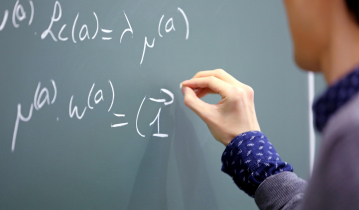Ms Chantal Marlats will defend her HDR (habilitation à diriger des recherches) on "Essais en Économie Industrielle" on Wednesday, May 24 at 2:00 pm, room MC 203 – Manufacture des tabacs, Toulouse
Memberships are:
- Johannes Horner, professor, TSE
- Thomas Mariotti, professor, TSE
- Ines de Moreno de Barreda, professor, Oxford University
- Sven Rady, professor, Bonn University
- Régis Renault, professor, Cergy University
Abstract
This thesis brings together some of my research works in Micro-economics, which is the branch of Economics that analyzes individuals’ behaviors and interactions. In this thesis, I focus on investment dynamics in uncertain environment. In such situations, agents typically acquire feedback and make their investment decisions according to their updated information. Feedback are subjects to frictions: they may be imprecise, delayed or costly. The common thread of these chapters is to understand how imperfect feedback influence investment decisions.
This thesis is divided into two parts, thefirst consisting of three articles applied to research and development and the second of two articles applied to preventive behaviors in epidemiology that are analyzed as investments, i.e., costly actions that are taken in the hope of future benefits.
The first chapter of part 1 is taken from the article "Strategic observation with exponential bandits" (2021) co-authored with Lucie Ménager. I consider a dynamic model in which two players decide at each date how to allocate a resource between a risky project and a safe project. The risky project can be of good or bad quality. Initially, the agents do not know the quality of the risky project, but they can acquire information by investing in it (if the agent observes that the outcome of the investment is low, then it will infer that it is more likely to be of poor quality). They can also observe the opponent’s investments and outcomes by paying a flow cost. I characterize a class of symmetric Markovian equilibria and show that a higher cost improves (or at least does not decrease) the payoffs.
The second chapter of part 1 is taken from the article "Observation delays in teams and effort cycles" (2021) co-authored with Sidartha Gordon Lucie Ménager. I consider a team whose members individually choose the level of effort to complete a project. When an agent completes the project, the other team members are informed and rewarded with an exogenous delay. This delay is interpreted, for example, as the time required for information to flow through the hierarchical channels of the firm. I characterize the unique symmetric equilibrium and show that, unlike the case without delay, agents alternate phases of maximum effort with phases of rest. I also show that a small delay increases the average effort frequency if and only if agents are sufficiently patient.
The last chapter of the first part is taken from the working paper "Racing with a rearview mirror: innovation lag and investment dynamics"(2023), co-authored with Nicolas Klein and Lucie Ménager. I consider a model in which short lived agents sequentially decide how much to invest in an innovation whose feasibility is unknown. I assume that there is a delay between the investment decision and the realization of the outcome. I characterize the unique equilibrium. If the prior is high, the level of investment decreases discontinuously over time. If the prior is low, the level of investment is not monotonic. This result contrasts with the no-delay case, in which the equilibrium strategy prescribes investing the maximum amount for a certain period of time and then stopping the investments irrevocably.
The second part of the thesis considers epidemiological models in which agents may decide to reduce their level of social activity in order to reduce the risk of being infected by a virus. The response to an infection depends on their type: if an individual is of the asymptomatic type, an infection goes unnoticed, but if he is of the symptomatic type, he develops symptoms. Initially, individuals do not know their type and update their beliefs based on the symptoms they have had so far. The first chapter of part 2 is taken from the article "Self-isolation" (2021), co-authored with Dominique Baril-Tremblay and Lucie Ménager. I characterize the unique symmetric interior equilibrium and run simulations. I compare the infection dynamics of our model with those obtained with a classical epidemiological model. A better mitigation policy decreases social distancing but also the total number of deaths. Delaying the date that the government announces that an outbreak has occurred increases the number of deaths. The last chapter is taken from the working paper "Self-isolation under uncertainty" (2023), co-authored with Dominique Baril-Tremblay and Lucie Ménager. I assume that not only do individuals not know their type, but that they also do not know certain epidemiological parameters. I characterize the unique symmetric interior equilibrium. I compare the dynamics of infections obtained by simulations between the case with uncertainty and the case without uncertainty on the epidemiological parameters. A second wave of infections can occur in the case of uncertainty. The value of information in terms of number of deaths is negative. Similarly, the information value in terms of payoffs is negative under some conditions.



